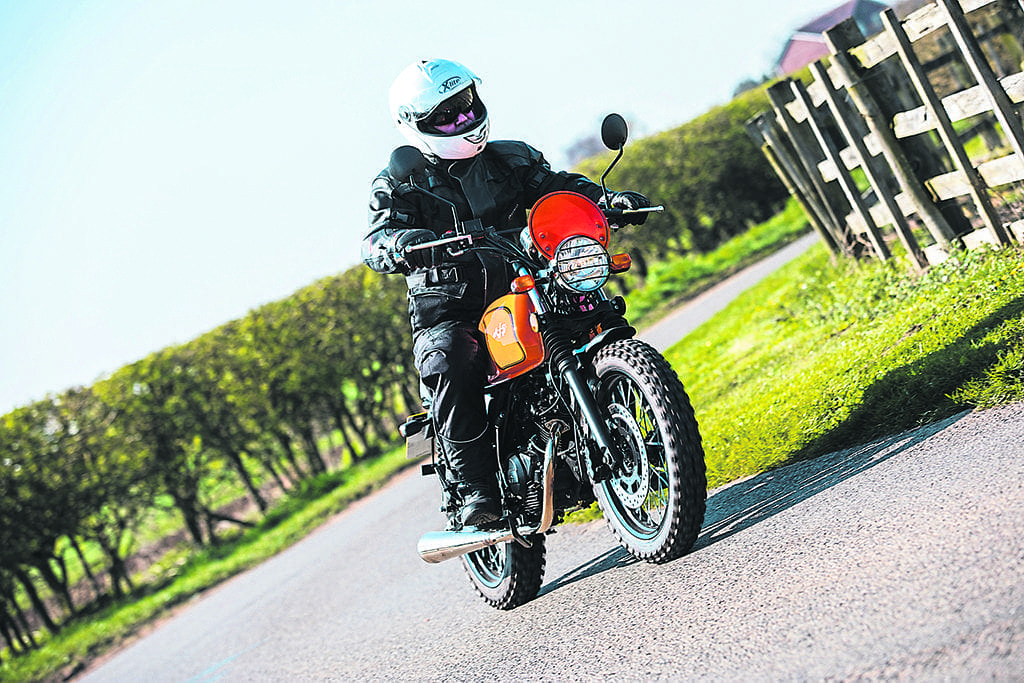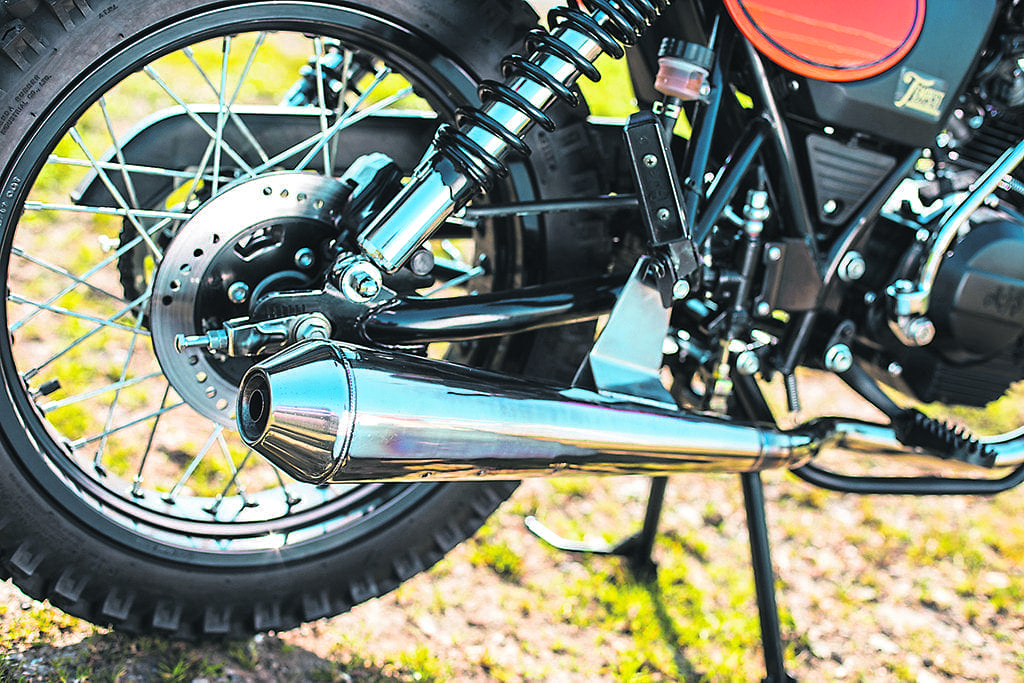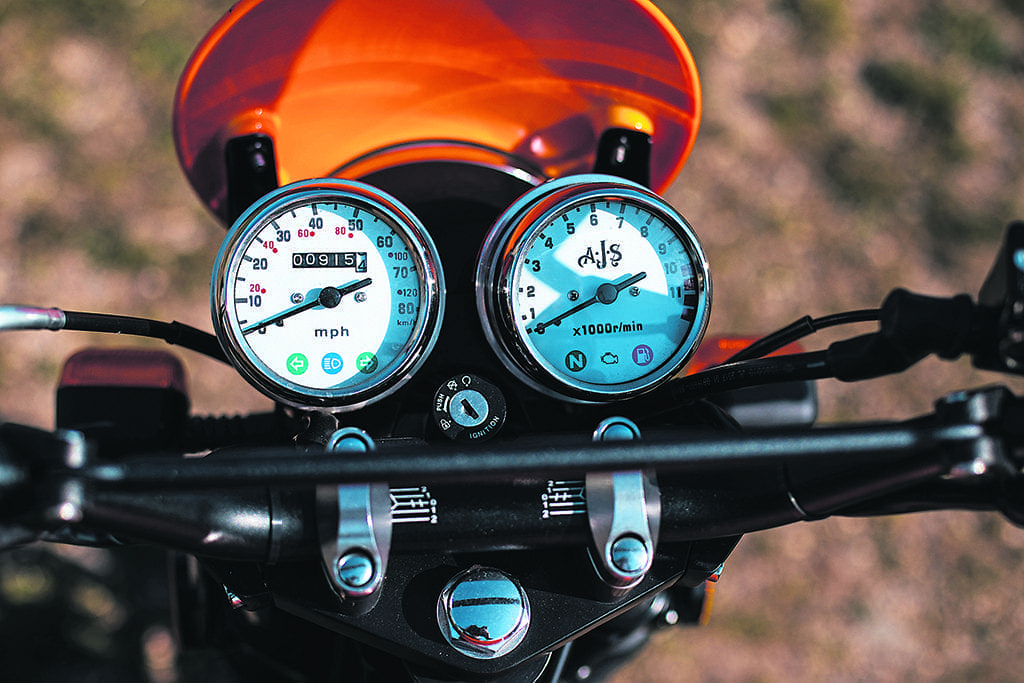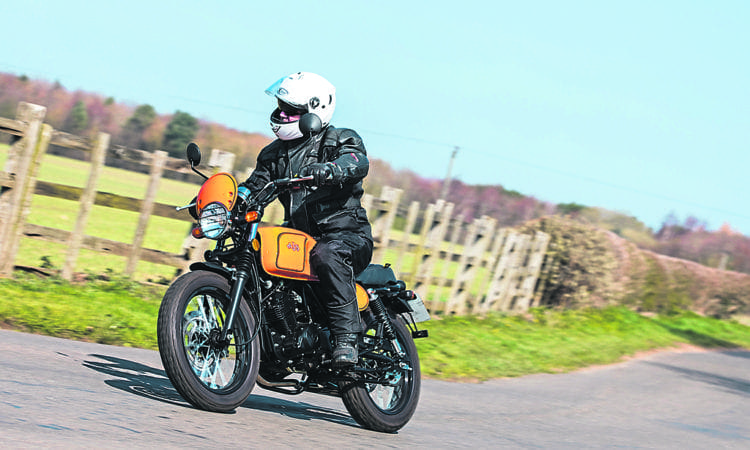Try searching the internet for AJS motorcycles and what do you find? A selection of classic motorcycles from the last 100 years or so; but what about the new AJS company?
AJS was re-started by the late Fluff Brown in September 1974. Fluff, working as the off-road competition manager at Norton Villiers, bought out the ailing company and the entire stock of AJS Stormer Scrambler parts.

Fluff’s eldest son joined the company in 1987 and started looking at the array of small, affordable motorcycles built in China. A copy of the world-famous Yamaha PW80 (one of the first children’s bikes imported and distributed through a dealer network by AJS in 1998) was the Jianshe Coyote-80, which proved very reliable and robust.
Enjoy everything More Bikes by reading monthly newspaper, Read FREE Online.
Riders on the storm
Today, AJS’s current mission policy is to bring to the market exciting and unique motorcycles and scooters that offer exceptional value and quality, backed up with a two-year warranty (including parts and labour), along with a spare parts service of excellence.
Now this wee little motorcycle – in keeping with the AJS Scrambler tradition – is the Tempest. It actually takes me back to the very first bike I ever bought, way back in the mid-70s, whilst serving in the RAF in Lossiemouth, Scotland – a Suzuki TS185. Similar styling, even similar in colour, but a larger cc-powered trail bike and, of course, Japanese made as opposed to Chinese.

This small and lightweight model with off-road capabilities was my choice as a learner vehicle then and I can see why this new 17-year-old learner-legal model, which you can ride on a CBT or A1 driving licence, would be a similar choice as your ‘first on two wheels’ machine.
“I’ve been Tango’d”
These were the first words I spoke when I initially saw this bike in the flesh. Blazing Orange was the colour for this 125cc small, lightweight 124kg (272lbs) model, built on the Cadwell platform, but with a longer swinging arm. Other options reflect the colours of previous great AJS scramblers, with it being available in the old classic Jet Black, Oasis Blue and Mojave Yellow.
The bike really does look the dogs – bigger looking than I first thought after checking it out on the AJS website. Solid in all aspects and even though it’s classed as a lightweight, it still has that rugged, robust feel to it, too. Straight-pull, spoked wheels with black alloy rims; a big 4.10-18” on the front with a smaller 4.60-17” on the rear. Front and rear single disc combined braking system. Huge knobbly ‘Adventure’ tyres fitted as standard.
It has 37mm diameter front forks with, of course, the rubber fork protector sleeves in black, along with an extended mudguard on the front to help prevent splashback. It also has twin rear shocks and with number boards front and centre, so it really does have that look of a competitive old-style Scrambler – and it has a headlight guard fitted, too. There’s also a centre and side stand, of which the latter has to be raised to enable the bike to be started either with the electric or kick-start; this modern-day safety feature threw me when I first tried to fire the bike up.

With this bike, there’s not too much chrome to worry about should you go ‘green-laning’ – just the stainless steel exhaust system.
A comfortable fit
I’m only 5’8” (173cm) so with a seat height of 780mm and a 1370mm wheelbase, it’s a nice size for us shorties; not sure about anyone of a tall nature, as I think this bike would then be a little cramped.
Now I did find that the suspension system on the Tempest (even though it was dialled-in on the softest settings) is extremely hard (I guess it’s designed like that should you take it off-road). So, coupled with those big knobbly tyres, it’s a tad uncomfortable on my 27-mile commute to work, so it was a hard ride on my first outing. You do quickly get used to the tyres after a few more rideouts.
Whilst I didn’t get a chance to test them out in the wet, it’s quite nice on the tight twisties on rural roads. And as long as you use the gears often, then it’s a fun ride at low speeds; the same goes for any hills (although we don’t have that many in the Lincolnshire Fens and Wolds where I live). Just remember to drop it down a gear or two, otherwise the engine struggles a bit.
Saying that though, the bike is happy tootling along at 50mph once you get on a straight bit of road and any corners – even relatively tight ones, can be ridden through in top gear, such is the gearing. At first changing down to scrub-off speed on approaching 30mph speed limits, I found the bike almost coming to a direct stop, but with time you’ll learn when and which gear to change down to and I now remember to change well in advance, finding a smoother approach with its gearbox.
The OHC, air-cooled, single cylinder engine is fuel injected, so no fuel tap to remember to turn off or on; but with a maximum power of 7.4Kw@9,000rpm, this four-stroke is not going to set the rubber alight, but it does have an engine balance shaft to give a smoother ride. Transmission is a 5-speed gearbox and chain-driven.

First date
This is the first time I’ve ridden a small cc engined bike for a long, long time, so it’s been an experience, to say the least. It’s not really fair to compare this to my old Yamaha FJR 1300 beast of a bike, but it has been like reminiscing back to my younger years and that first TS185. In a way it’s like learning to ride again from scratch. Even as an IAM Advanced rider we were always taught that you’re never too old to learn and I find myself using my IAM skills on this bike, too – only I do have to remember to pull over from the centre of the carriageway and indicate to let car drivers past.
So far the fact that I’m doing this has given me in return many positive gestures of hand waves and hazard lights to acknowledge that I’ve seen them and let them speed by. So, constant mirror checks are my advanced riding top tips for the less experienced; let them by as you’re never going to travel at any great speed on this little weenie.
The instrument cluster looks clear and large in size, with the speedometer marked in both mph and kph. I did find that if the weather was a bit on the cold side the speedo and rev counter dials seemed to mist up a bit (not sure if it was on the inside of the dial or outside of the glass).
A low fuel warning light is included, but I’m not sure at what remaining level this would illuminate as I’ve not tested it, although it looks like it’s when there’s around 2.5 litres left in the tank (something to check further in the user manual, I think)! The indicator and light switches are easily reached with a gloved hand, along with the main beam switch. This also applies to the full beam pass switch.
Personally, I’ve not had to change any of the bike’s adjustments or settings, other than tighten up the mirrors. The rear brake pedal seems to have a fair bit of travel on it before it bites and I may raise this up in time. The front lever is fine and the clutch lever is a little on the tight side, but I do prefer this.
A 16 litre (3.5 gallon) tank should get me some serious mileage out of the Tempest (AJS claim 118mpg under test conditions); speed-wise it’s only let me do 55mph max so far on full throttle, although the spec does say approx 60mph top wack – must be my 12 stone-plus frame it doesn’t like! Oh to be a skinny 17-year-old again!
Blazing Saddles it’s not!
Solidly built and heavier than I thought it looked, for a first-time riders’ bike it’s ideal – no silly speeds to cause any real problems for beginners, and the off-road option too, will be good for some.
When I had the Suzi TS mentioned earlier, I used to love taking it off-road through local woods, down the beaches and sand dunes (all great fun when you’re honing your rider skills as a novice). I did give it a blast down a green lane locally and it was fine; just give it plenty of revs before setting off from a standing start, as the clutch has a fair bit of travel before it actually bites!
A neat luggage rack can be obtained as a low-cost accessory, along with reservoir rear shocks.
The only negative I want to mention is the seat: the website description claims a ‘plush diamond pattern seat’; well, it does have a diamond pattern granted, but plush it certainly isn’t. Yes, some will say it’s not an FJR with a seat like an armchair, but come on AJS – some form of padding would be great (it’s possibly the reason I feel the bike is a hard ride)! If I ever bought one (as say a winter hack) I’d have to contemplate the purchase of an aftermarket gel seat for it, that’s for sure.
Advert
Enjoy everything More Bikes by reading the MoreBikes monthly newspaper. Click here to subscribe, or Read FREE Online.


